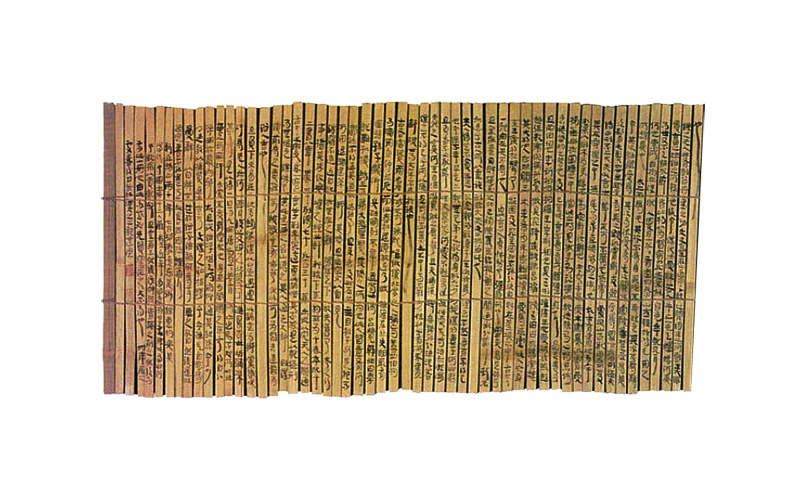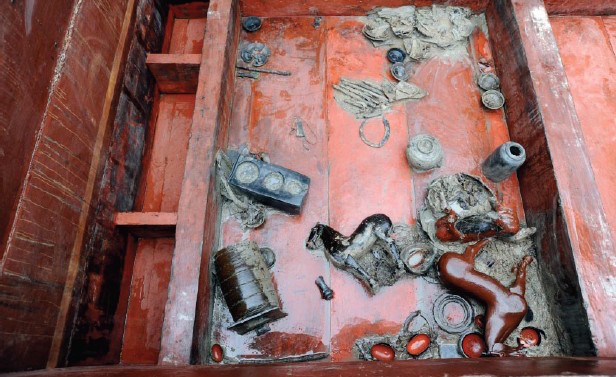Hey guys, hope you all had a lovely xmas and or hanuka holidays, we’ve taken a week off in an attempt to find that space between the doing and the being that occasionally escapes us. So in that vein in this week’s blog you can read about something I find absolutely fascinating, as you may have guessed its about Chinese medicine, but what nobody had suspected was the discovery of hundreds of bamboo scrolls dating back to 2300 years ago containing many volumes of medical writings by one of the most revered doctors in Chinese medicine.
Who was Bian Que?
One of the most amazing historical discoveries for Traditional Chinese Medicine made recently was unearthed when digging on a site in Chengdu’s Laoguan Mountain. Four Western Han Dynasty (206 BCE – 24 CE) tombs were revealed containing a fantastic collection of the medical writings of Bian Que, who can be compared to the ancient greek Hippocrates, the father of Western medicine.
Bian Que (circa 401 b.c – 310 b.c) is widely considered one of the great ancient doctors who are given credit for the founding of Chinese Medicine. He was famed as holding almost mystical powers of diagnosis: one legend declared that he was given a potion of herbs to drink and, afterwards, he understood the secrets of nature and was able to see through the human body with an x-ray like ability. Some say this combination of herbs may have contained some psychoactive ingredients that would induce a mind altering experience that could explain this experience.
Other stories about Bian Que attribute him with performing the first heart transplant – described as the ‘exchange of hearts’ – and bringing the Prince of Guo Region back to life. Although this is explained by the author, the Prince was in a state of coma and he came to, by the one needle technique acupuncture treatment that Bian Que applied and was then revived and healed by the herbal decoction that was prepared for him. His work and teachings focused on preventative medicine and early treatment and he was careful to admonish superstition, ‘A case is incurable if one believes in sorcerers instead of doctors.’
So, what did they find?
Archaeologists uncovered 920 bamboo strips on the site, sitting in pots filled with water and mud. The strips were used as durable writing material. The library held an incredible wealth of medical knowledge, not only relating to human treatments but also containing 184 tiles relating to the medical treatment of horses. A 14cm long lacquer figurine with major acupuncture points and channels was found – the oldest one ever discovered in China.
Bian Que’s medical writings were collected in the Nan Jing (‘Classic of Difficulties’), and his writings were often discussed by Han Dynasty physicians who claimed to have read them but the actual original scrolls of his extensive medical library have been lost till now!
The bamboo strips give further details of Bian Que’s range of treatment and practise, including gynecology, ophthalmology, otorhinolaryngology (diseases of the ear, nose and throat) and paediatrics. He used a combination of herbal medicine, acupuncture, moxibustion, massage, surgery and anesthetics as each individual case demanded. Bian Que used four steps to diagnose the patient.
Bian Que’s four-step Diagnosis Method
Observing – looking at the face and the tongue colour, general appearance and the tongue body and coating
Auscultation & Olfaction – listening to the voice and internal sounds and smelling
Inquiring – asking the patient about the symptoms they experience
Pulse – Analysing the pulse
For the uninitiated, these are some of the basic practices that were conceived in the early days of pre-Han Chinese medical practice. Taking the patient’s pulse was studied as a science and then developed further and practiced as an art of capturing the narrative of the health of the patient thru the subtle differences of the beat of the heart and the flow of the blood.
They describe the pulse in quite a poetic way such as: ‘it sounds like a sickle, first exuberant then dying away’, ‘flowing along quietly like flying hair or feathers’ or ‘beating deep and strong like a thrown stone’ and so on.
Bian Que’s techniques and treatments are some of the fundamentals of TCM that are still useful in clinical practice and diagnoses today, over two thousand years later. What was true then is still true now.
Read What is acupuncture? on our website and more articles about acupuncture on our blog.
Ed. Helaine Selin, Encyclopedia of the History of Science, Technology, and Medicine in Non-Western Cultures (Springer, 2008)
https://www.britannica.com/biography/Bian-Qiao
http://www.ecns.cn/2014/05-12/113474.shtml
Easter Han Stone Carving image by BabelStone (Own work) [CC BY-SA 3.0], via Wikimedia Commons
Portrait of Bian Que by Wellcome images
Bamboo Scroll by Eric Gerlach






